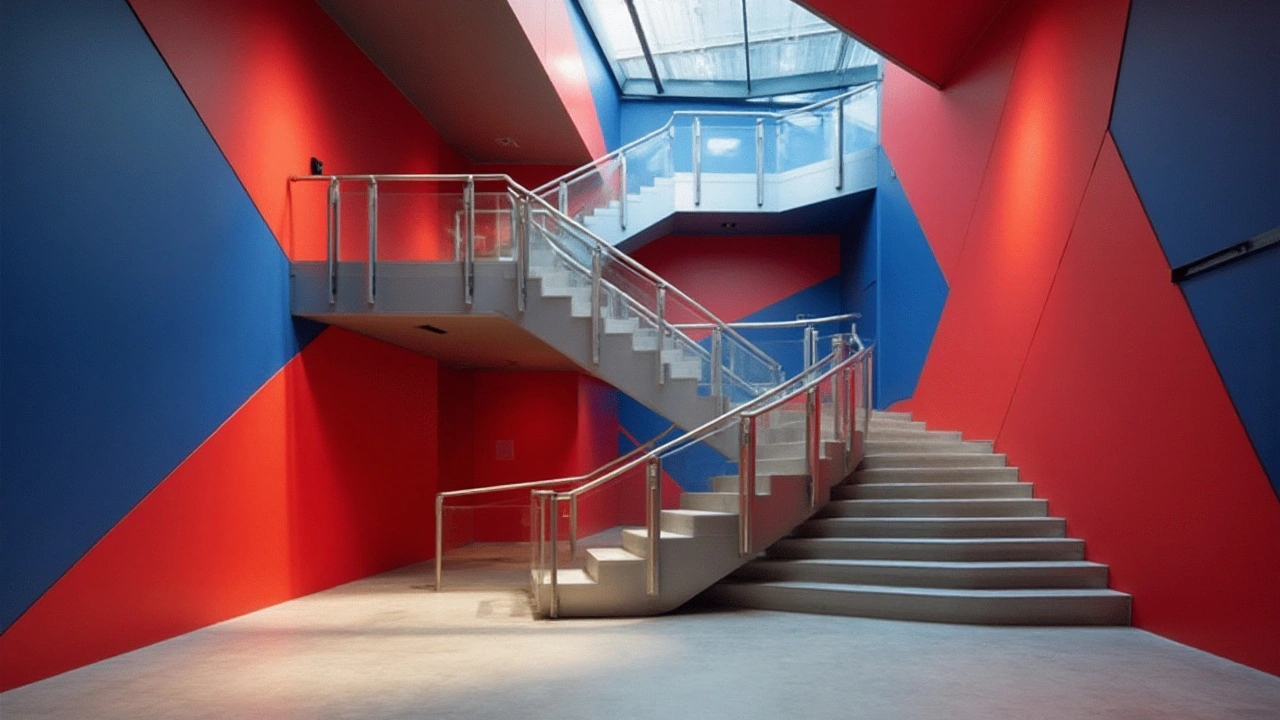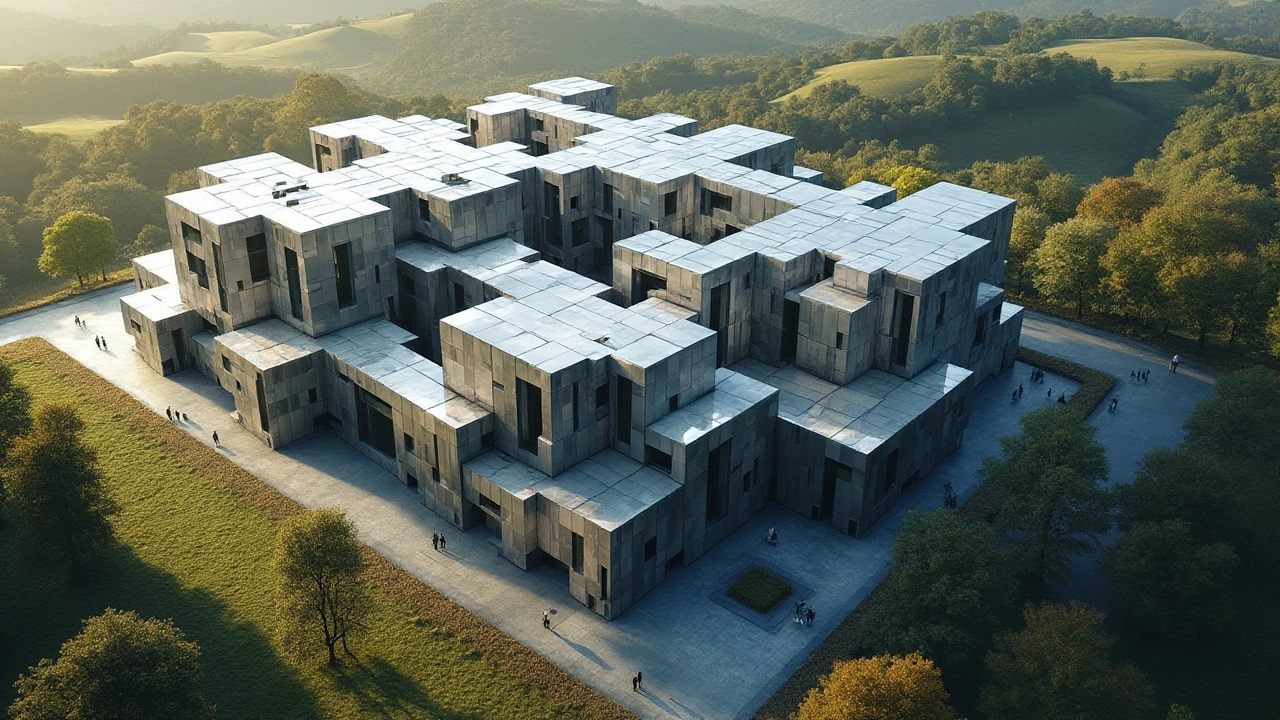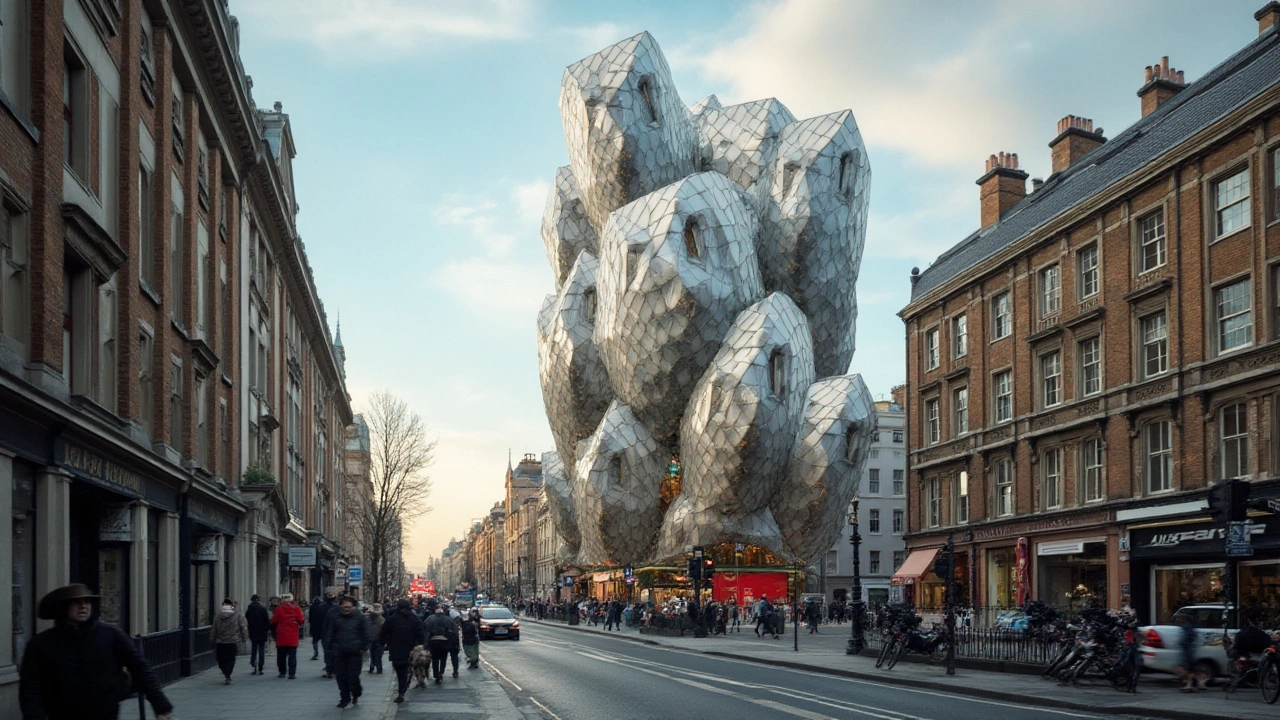Deconstructivism in architecture represents a radical departure from the tall, proud edifices of classical design. It thrives on chaos and complexity, blurring the lines between function and form. This movement isn’t just about messy visuals; it’s a deeply intellectual challenge to the way we think about structure and order. It's as if a building had an argument with itself—and the arguments show. Famed architects like Frank Gehry have made this eclectic style popular, crafting buildings that seem to defy gravity and predictability.
But how did this intriguing approach come to be? And more importantly, what impact does it have on the places where we live, work, and play? This article delves into the roots of Deconstructivism and its key characteristics, exploring how it influences contemporary spaces today. Whether you’re an architecture aficionado or just curious about the places that surround us, understanding Deconstructivism offers a fresh lens through which to appreciate the art of building.
- The Origins of Deconstructivism
- Key Characteristics and Features
- Influential Architects and Works
- Impact on Contemporary Spaces
The Origins of Deconstructivism
Deconstructivism as an architectural movement began to crystallize in the late 20th century, emerging prominently in the 1980s. It finds its intellectual roots in the philosophical works of Jacques Derrida, although its methods and aesthetics bear more on the realm of visual and spatial arts. This movement was not birthed in isolation but was influenced profoundly by Russian Constructivism of the 1920s, which dared to defy traditional architectural ideals through abstraction and experimental forms. Nevertheless, Deconstructivism twisted these revolutionary ideas into something new—fractured them, if you will—to break the constraints of symmetry, order, and intention that had long dictated architectural spaces.
Moscow's Kazimir Malevich, with his supremacist art focusing on abstract forms, was a harbinger of the boundaries that Deconstructivists would explore decades later. It's intriguing how *Deconstructivism* often works at odds with itself, aiming to create an impression of instability even as it relies on the innate strength of structure. This movement fully came into its own thanks to the 1988 Museum of Modern Art exhibition, curated by the ever-imaginative Philip Johnson. Seven architects, including Frank Gehry and Zaha Hadid, were spotlighted, demonstrating how their work embodied the characteristics of fragmentation and unpredictability that define the style.
What makes Deconstructivism particularly fascinating is that it doesn't just abandon past conventions; it engages in a kind of dialogue with them. Take the seminal works of Swiss-born architect Bernard Tschumi. His Parc de la Villette in Paris, designed in 1982, is a testament to how the elements of structure were almost willfully disordered to create a new kind of aesthetic. "Form no longer follows function," wrote Tschumi, "yet it doesn’t abandon it either."
Tschumi elaborated in his writings, stating, "Architecture is not simply about space and form, but also about event, action, and what happens in space." This contributed to a radical new narrative in architecture—an architecture influenced by ideas, rather than simply the pragmatic.
Indeed, the narrative evolved from simply making utilitarian buildings to challenging how we experience space itself. The style characteristically manipulates a building's skin or surface, turning it into something erratic yet constructive. Let's not forget the embrace of materials that transform visual expectations, integrating glass, steel, and unexpected materials in a playful rebellion against traditional use. As the globe was confronted with the power and absurdities of modernism, Deconstructivism found a niche that questioned what buildings could convey, politically, intellectually, and aesthetically.

Key Characteristics and Features
When delving into the realm of Deconstructivism, one immediately recognizes its distinct departure from the clean lines and symmetrical structures that often dominate architectural design. One of the key characteristics is its emphasis on asymmetry. Buildings in this style often appear fragmented, disrupting the traditional notion of harmony and balance. This gives each structure a sense of dynamism, as though it's capturing a moment of tension. The Guggenheim Museum in Bilbao by Frank Gehry showcases these principles beautifully, with its flowing and chaotic forms that challenge the eye at every turn, creating a sense of movement despite its static nature.
Another fascinating feature of Deconstructivism is the use of unexpected angles and non-linear designs. Traditional architecture often adheres to a grid-like system, but Deconstructivist designs break free from these norms. This is evident in the works of Daniel Libeskind, whose Jewish Museum in Berlin features floors and walls deliberately skewed at odd angles to disorient and evoke emotion. This approach isn’t arbitrary; each angle and plane tells a story or conveys a particular narrative, engaging visitors in a dialogue through the physical space.
The materials used in Deconstructivist architecture also contribute to its unique aesthetic. Architects often blend different textures and materials, combining glass, metal, and wood in incongruous ways. This unexpected mixture adds texture and depth, challenging the viewer’s preconceived notions about how such elements should interact in the built environment. For example, Zaha Hadid's designs often incorporate sweeping forms and unconventional material combinations, creating a sense of fluidity and ambiguity that sets her structures apart. As a guiding principle, Deconstructivists aim to provoke thought and elicit emotional responses from those who experience their designs.
It's important to note that while the visual impact of these buildings is arresting, Deconstructivism is deeply rooted in theory. It finds its philosophical base in the works of philosopher Jacques Derrida, who advocated for deconstructing ideas to understand their inherent contradictions. In an
"Architecture is a form of communication, a silent conversation," Derrida once remarked, encapsulating the essence of how Deconstructivism speaks to its surroundings.This theory translates into architecture as buildings that challenge perceptions and question the status quo, inviting observers to look beyond what is and ponder what could be. The result is an architectural style that is as much about intellectual engagement as it is about visual stimulation.

Influential Architects and Works
The world of Deconstructivism is rich with intriguing architects whose groundbreaking works have fundamentally reshaped spaces. Leading the charge is Frank Gehry, an iconic figure in modern architecture. His Guggenheim Museum in Bilbao exemplifies the unpredictable forms and fragmented structures that define this movement. Gehry's design features intertwining shapes that appear to dance around each other, challenging traditional aesthetics. Another famed piece is his Walt Disney Concert Hall in Los Angeles, where swooping steel curves come alive, making music with the wind. Here, Gehry uses asymmetry and distortion to create a sense of movement and lightness, drawing visitors into an experience rather than just a space.
An equally pivotal figure is Zaha Hadid, often hailed as the "Queen of the Curve." Hadid's designs defy the conventional, embracing fluidity and dynamism. The MAXXI Museum in Rome is a masterpiece of her vision, a futuristic flowing structure that encourages exploration and interaction. This building is not just a container for art; it is art itself, with sloping walls and open spaces that invite the unexpected. Hadid's designs push boundaries, demonstrating Deconstructivism's potential to evoke emotional responses while redefining spatial experiences. She once remarked, "Architecture should be more like music that you cannot see but can move through" — a philosophy that resonates through her works.
Rem Koolhaas, with his firm OMA, is another vital proponent of Deconstructivism. His Seattle Central Library is a striking example of how defying symmetry can redefine function. The library's layout emphasizes transparency, accessibility, and technological integration, creating a space that nurtures creativity and learning. Koolhaas employs unconventional geometries to engage visitors in an architectural journey, prompting them to rethink how a library should feel and function. His work illustrates how form and function can be imaginatively intertwined, walking a fine line between chaos and order.
For those keen on understanding the evolution of Deconstructivism, a look at Daniel Libeskind's oeuvre is indispensable. Libeskind's Jewish Museum in Berlin stands as a poignant tribute, its zigzagging form designed to elicit an emotional narrative of Jewish history. The building's slashed lines and voids tell stories of loss and hope, intertwining visceral experience with historical reflection. His works often feature jagged designs and sharp angles, symbolizing disruption and dislocation, key themes in Deconstructivism. Libeskind's approach highlights architecture's role in storytelling, embodying memory and notions of identity within structural forms.
Through the lens of Deconstructivism, these architects have not only reimagined space but have also reshaped our perceptions of form and meaning. Their works are testaments to the power of architecture to break free from the status quo, inviting us to interact with, question, and ultimately experience our environments in novel ways. It is an invitation to see buildings not just as shelters but as living art, burgeoning with the potential to change how we perceive the world.

Impact on Contemporary Spaces
Deconstructivism has left its audacious imprint on the fabric of modern design, challenging norms while infusing spaces with a sense of bold dynamism. One cannot overlook how this architecture style has fundamentally altered the landscape of urban environments. By embracing fragmentation and unpredictability, architecturally significant cities have experienced a renewed vibrancy, turning every corner into a potential canvas. The element of surprise, a hallmark of Deconstructivism, speaks to our innate curiosity and wonder, making ordinary spaces extraordinary and undeniably engaging for the urban dweller.
Among the many transformative aspects of Deconstructivism is its ability to provoke a visceral reaction. Walking through a space like the Guggenheim Museum Bilbao, designed by Frank Gehry, one is struck by the fluidity and animation cast in steel and glass. The museum's swirling forms defy traditional geometry, inviting visitors to see art and architecture in a synergistic dance. It goes beyond functionality, serving as a cultural beacon that draws global audiences and places architecture at the heart of social interaction, influencing everything from tourism to local community life.
Interestingly, this architectural movement has not only been a visual spectacle but has also succeeded in drumming up crucial conversations about sustainability and urban development. The unorthodox shapes often require innovative engineering solutions and materials, sparking advances in building technologies that can be used again in more traditional designs. This blend of creativity and technology often leads to sustainable innovations that impact our daily lives—and not just those who appreciate modern art or architecture. It's a testament to how the style has reshaped considerations beyond the aesthetic, integrating environmental concerns into the discourse.
Deconstructivism has also influenced interior spaces, offering designers freedom to rethink conventions. This approach often spills into interior design, where unexpected angles and layered textures create environments that challenge perceptions and stimulate conversation. The use of raw materials like exposed concrete and corrugated metal adds layers of contrast and depth, making interiors just as compelling as their outer shells. Designers interested in this style embrace the ‘unfinished’ look, invoking a minimalist ethos while maintaining an essence of raw creativity.
While Deconstructivism can be polarizing—it does have its detractors who argue it sometimes privileges form over function—its significance cannot be ignored in the context of contemporary architecture. Transformative, daring, and unpredictable, the style continuously pushes the boundaries, reinforcing architecture as an art form that moves, challenges, and inspires. As architectural tastes and societal needs evolve, deconstructivist elements often act as reminders, presenting us with a different way to see and interact with the spaces around us.





